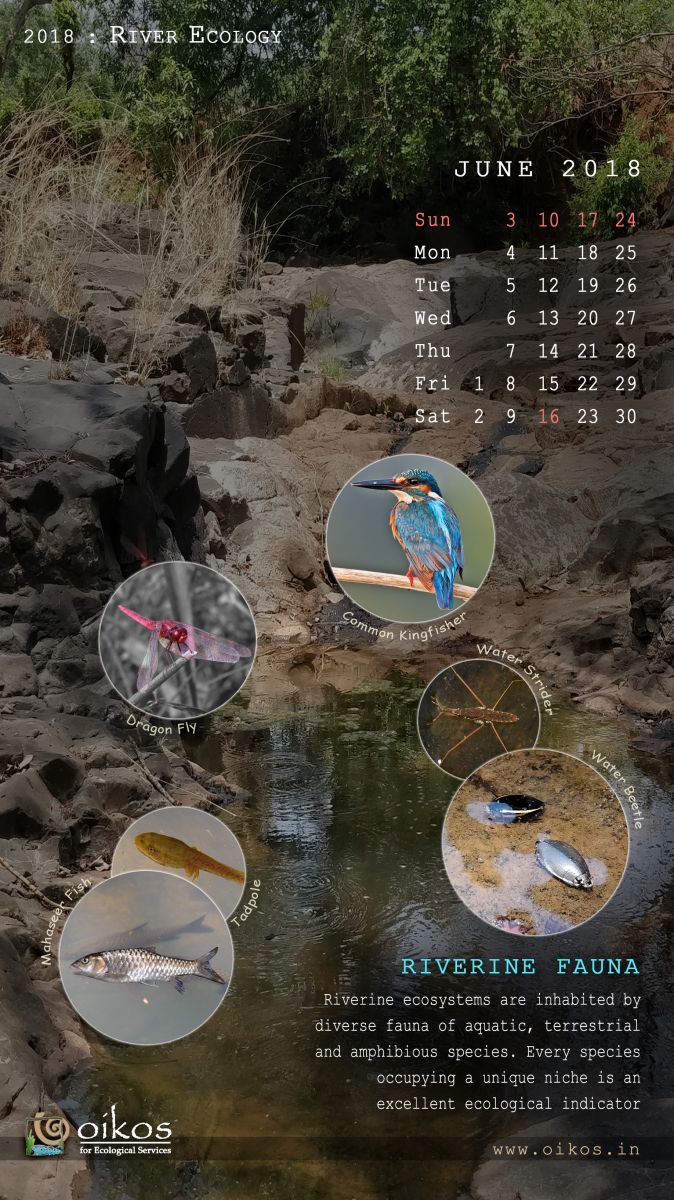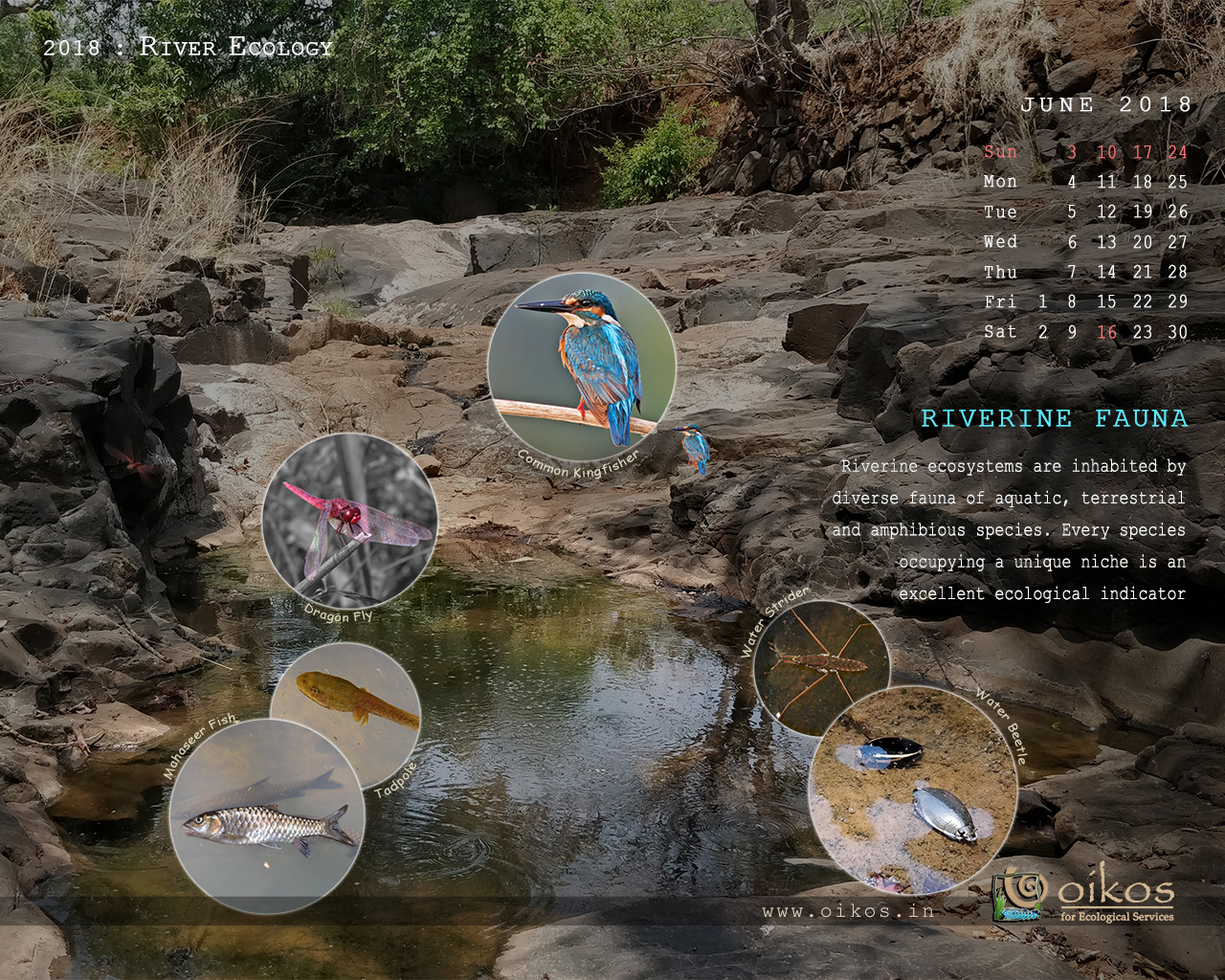Jun - 2018
Dear nature lovers,
Greetings from oikos !
Riverine ecosystems are richly endowed with a diverse and abundant fauna, comprising of aquatic, terrestrial and amphibious species. As the rivers flow over long distances and varied terrains, they create a rich diversity in habitats, which provide food and shelter to the various faunal groups, as discussed briefly in April calendar. They include invertebrates like mollusks, and arthropods, and vertebrates like fishes, amphibians, reptiles. Each of these groups comprises of thousands of different species and each of the species occupies a unique position in the riverine ecosystem. This is unique space is called a 'niche'.
Different species can be seen occupying nearly every available habitat. This includes stone surfaces, deep water, mobile currents and the surface film. Up to 90% of invertebrates in lotic (flowing) systems are insects. Additional invertebrate taxa common to flowing waters include mollusks such as snails, limpets, clams, mussels, as well as crustaceans like crayfish and crabs.
Fish are probably the best-known inhabitants of lotic systems. Lotic systems typically connect to each other, forming a path to the ocean (spring → stream → river → ocean), and many fishes have life cycles that require these multiple stages. Fishes migrate upstream against flow of water to lay eggs in nutrient-rich areas, and travel downstream after hatching. For this reason, the continuum of the flow and conservation of habitats is of utmost important for aquatic life.
Other vertebrate taxa that inhabit riverine systems include amphibians (e.g. frogs, toads), reptiles (e.g. snakes, turtles, crocodiles and alligators) birds and mammals (e.g., otters, beavers, hippos, and river dolphins).
Many of the fauna are ‘indicators’ of the health of an ecosystem. e.g. Water Beetle (पाण निवळी)and Water Striders, Common Kingfisher are indicators of a relatively clean water. On the other hand, the presence of a bird like the Black-winged Stilt is an indicator of sewage infested river. Absence or presence of these species, thus tells us about the ecological health of the river.
Biodiversity therefore needs urgent attention, since it is invaluable in the upkeep of the ecosystem services that the river provides. It must be accounted in assessment, planning and management of rivers.
Regards,
Ketaki & Manasi
With Team oikos !
Please Note -
This Email is a part of awareness campaign initiated by oikos, Pune. Write to us for your valuable feedback.
oikos have been sending ‘Desktop calendars’ since January ’06 with various themes, which can be downloaded from our website.
If you are not willing or not the correct recipient of this Email, kindly reply this mail with subject 'unsubscribe'.
Thanking you for your precious time.
Spread a word !! Forward to nature lovers !
Click on any of the desired options below to get appropriate image.
Save it to computer and set it as desktop background for your computer monitor.
Oikos for ecological services
Ph. 020-25451875
Web: www.oikos.in




